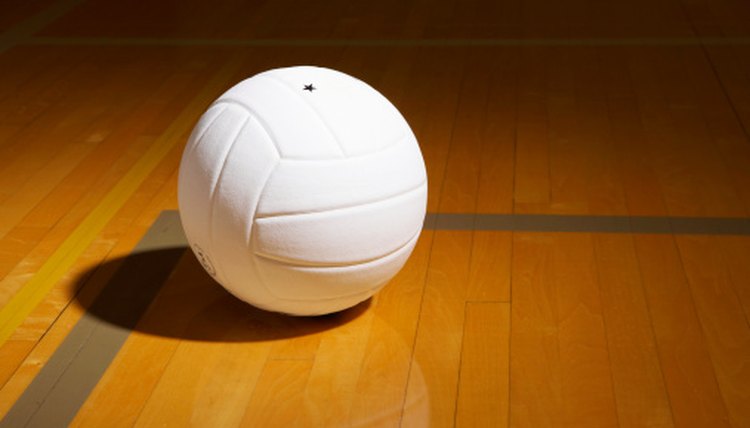Volleyball Referee Rules & Hand Signals

Volleyball is a competitive game played by men and women. Children as young as 7 years old can begin playing this sport as well as adults. League volleyball has increased in popularity since the 1990s and college volleyball is watched by many. You should be aware of a number of rules and hand signals performed by the referees if you play the game.
Referees
Referees are the officials who are responsible for ensuring that all rules of the games are followed. Two official referees are in any volleyball game. The first referee, or R1, stands at the referee stand. The first official gives the signal to start the game by whistling and has the authority to overrule any other official’s decision. The second referee, or R2, is responsible for keeping track of time, administrating the substitutes and communicating with the coaches or teams effectively as well as assisting the first official.
Hand Signals
Referees use several hand signals during a volleyball game. The referee blows the whistle to signal the start and end of each play. The hand signals are given by the referee who first signals the fault and then indicates which team has won the point. A point is indicated by one finger at the side of the court to indicate the winner of the rally. Ball in bounds is meant to show the point of the court where the ball landed and is indicated by pointing one arm and hand toward the floor. If a ball is out of bounds or went outside the antenna, the referee will raise his forearms vertically and palm facing inwards. A carry is when the ball had too much contact time with the players hand and is indicated by holding hand horizontal with the palm facing upwards. A double hit is indicated by two fingers showing that the player contacted the ball twice. Begin service is meant to indicate that the server is now allowed to serve, which can be shown by holding the hand high in the air with the palm in the direction of the team serving the ball. A net violation is meant to show that there was a contact with the net. This can be shown by placing a hand over the net, ensuring that the palm is facing down.
Volleyball Terms
Player, coaches and referees should know certain volleyball terms. These basic volleyball terms include an ace, which is a serve that makes a direct point and a kill occurs when an attack results in immediate point. A tip is placing a soft shot above the opponents block, a block occurs when the player blocks a spiked ball resulting in the ball returning to the spiker's court and a free ball is a ball that is returned by passing. A set means placing the ball near the net for spiking purpose. Other terms include a spike, which is powering the ball over the net by hitting it hard, a dig is returning the spiked ball and a tool is spiking the ball off the opponent’s block.
Violations
Violations may occur in which the referee will need to call. Violations include a serving violation, which indicates the ball was not served within eight seconds of blowing the whistle, a net violation means that the net was touched, an attack violation is related to hitting the ball from an illegal position and a blocking violation is related to blocking the ball even before it has crossed the net into the player's own court.
References
Writer Bio
Lindsay Tadlock began writing in 2010. She has worked as a personal trainer for over three years and shares her fitness and nutrition knowledge in her writings. She graduated from Texas A&M University in 2000 with her Bachelor of Arts in finance and worked for seven years as a commercial lender.
